Introduction: Swiss dog breeds

Switzerland is home to some spectacular dogs. St Bernard and Bernese Mountain dog are the most famous among all the Swiss dog breeds. Swiss dogs are a product of their environment, sculpted by the mountainous and rugged terrain.
It is interesting to note the influence that the environment has on its dogs. We can group all of the native Switzerland dogs into any one of the below categories.
Mountain dogs of Switzerland

The following breeds are mountain dogs from Switzerland.
- Alpine Mastiff
- Alpine Spaniel
- Bernese Mountain Dog
- Entlebucher Mountain Dog (Entlebucher Sennenhund)
- Greater Swiss Mountain Dog (Grosser Schweizer Sennenhund)
- St Bernard
- Swiss Mountain Dog (Schweizer Sennenhund)
7 out of the 14 dogs of Switzerland are mountain dogs. Most of these dogs live in the Swiss Alps.
Scent hounds of Switzerland

The following dog breeds are scent hounds. These are either rescue dogs or hunting dogs.
- Bruno Jura Hound
- Schweizer Laufhund
- Schweizerischer Niederlaufhund
- St. Hubert Jura Hound
Shepherds and modern dogs of Switzerland
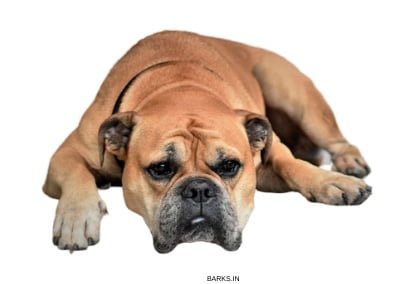
The following dog breeds are shepherd and modern dogs from Switzerland. These dogs are not products of the environment; instead, selectively bred.
- Continental bulldog
- White Swiss Shepherd Dog
History of dogs in Switzerland

To understand a country’s dogs, one must first look at its environment, its people, and its culture. In our estimation, these are the key factors that shape a country’s dogs.
The now extinct progenitor of St Bernard, the Alpine Mastiff, is one of the first dogs of Switzerland. Experts believe that this dog originated in Europe before 500 BC. The Alpine Mastiff was indeed a giant dog, some reaching one meter tall at the shoulders and weighing 160 kg.
The Great St Bernard Hospice was the birthplace of the St Bernard dog. It was built by the 9th century as a place of prayer and refuge by Saint Bernard of Menthon. People who lived in the hospice used dogs for guarding and protection.
These dogs proved useful as rescue dogs for people caught in avalanches. The most notable of these dogs was the dog named Barry. This dog worked as a mountain rescue dog for twelve long years. Barry helped rescue 40 people during its time of service.
Swiss dog breeds at a glance
| # | Breed | Ancestor | Type | Size | Temperament | Health | Status |
|---|---|---|---|---|---|---|---|
| 1 | 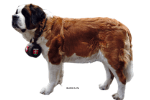 Alpine Mastiff | Roman Molosser | Mastiff | Giant | Fearless, Loyal | Good | Extinct |
| 2 | 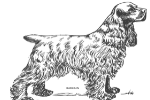 Alpine Spaniel | Roman Molosser | Spaniel | Large | Protective, Brave | Good | Extinct |
| 3 |  Appenzeller Sennenhund | Roman Molosser | Sennenhund | Medium | Alert, Intelligent | Ok | Rare |
| 4 | 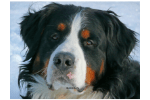 Bernese Mountain Dog | Roman Molosser | Sennenhund | Medium | Balanced, Dignified | Ok | Popular |
| 5 | 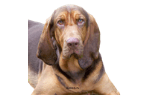 Bruno Jura Hound |  Bloodhound | Scent Hound | Small | Gentle, Calm | Good | Popular |
| 6 |  Continental bulldog |  English Bulldog | Mastiff | Small | Stubborn | Good | Rare |
| 7 |  Entlebucher Mountain Dog | Roman Molosser | Sennenhund | Small | Active, Loyal | Ok | Rare |
| 8 | 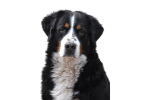 Greater Swiss Mountain Dog | Roman Molosser | Sennenhund | Large | Affectionate, Intelligent | Good | Popular |
| 9 |  Schweizer Laufhund |  Bloodhound | Scent Hound | Small | Gentle, Calm | Good | Rare |
| 10 | 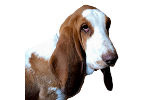 Schweizerischer Niederlaufhund |  Bloodhound | Scent Hound | Medium | Playful, Active | Good | Rare |
| 11 |  St. Bernard |  Alpine Mastiff | Mastiff | Giant | Gentle, Fearless | Good | Popular |
| 12 | 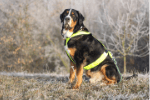 Swiss mountain dog | Roman Molosser | Sennenhund | Large | Affectionate, Intelligent | Good | Popular |
| 13 | 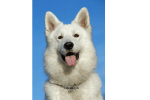 White Swiss Shepherd Dog | 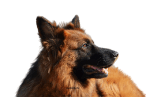 German Shepherd | Shepherd | Large | Intelligent, Active | Ok | Popular |
St. Bernard
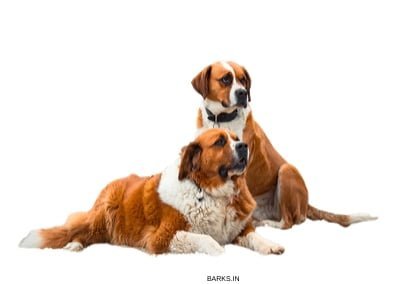
Saint Bernard is the most famous of all the Swiss dog breeds. They are a giant breed of working dog. All through history, this breed of dog has rescued several people buried by avalanches.
St. Bernard originates from the Great Saint Bernard Hospice. Due to the treacherous nature of the St. Bernard Pass, priests living in this hospice bred this dog as a search and rescue dog.
History and Origin

There are several theories about the origins of this dog. It is difficult to pinpoint the precise origins of this dog because, throughout the ages, people used different names for large alpine dogs. Alpine Mastiff, Alpine Mountain Dog, and Alpine Cattle Dog, to name a few.
Experts believe this dog shares its roots with other Sennenhund-type dogs in Switzerland. Sennenhund breeds are farm dogs living on the farm and fulfilling several roles.
Traits
- Classification: Working dog
- Height: 71 – 90 cm
- Weight: 64 – 120 kg
- Coat: Dense double coat
Saint Bernard is a giant-sized dog with some dogs weighing as much as 120 Kgs (260 lbs). Large head, bright round eyes, and muscular body are the hallmarks of this dog.
Patches of brown/red mixed with white are the most common color. St. Bernard has either a smooth or rough coat. The coat is dense, giving them excellent protection from the elements. This dog also has an extraordinary sense of smell and can locate people buried under several feet of snow.
Temperament

St. Bernard are the gentle giants of the doggie world. They are a search and rescue dog with a pleasant temperament. Like all large dog breeds, this dog too requires early socialization and training.
Keeping the dog isolated or mistreating the dog could result in aggressive behavior. St. Bernard ranks #28th in our list of most dangerous dogs in the world. With proper training, this dog is an excellent companion. Kids love these large gentle giants.
Notable St. Bernards

St. Bernard has saved several human lives. Our list must acknowledge and celebrate these dogs.
- Barry – Barry is the most famous Swiss rescue dog. This dog rescued between 40 to 100 people trapped by avalanches.
- Rutor – Rutor was the companion of the Italian priest Pierre Chanoux. This dog is famous due to an old photo that shows Rutor next to the priest. One of the few remaining pictures of the former St. Bernard.
- Plinlimmon – Plinlimmon is another famous dog. This dog weighed 95 kg, and an American paid $7000 to buy it.
- There are several other St. Bernards used as mascots of sports teams across the world.
Interesting Facts

- St. Bernard is the most popular and most famous of all the Swiss dog breeds.
- Barry, a St. Bernard rescued between 40 to 100 people buried by avalanches in the St. Bernard pass.
- Despite their giant size, St. Bernards are clam, dignified, and gentle.
Swiss Mountain Dog (Schweizer Sennenhund)

The Swiss Mountain Dog is a Sennenhund with ancient origins. They are one of the four Sennenhund-type dogs in Switzerland. Experts believe that this dog belongs to the Senn people who are alpine herders, and dairymen.
Like the other Sennenhund breeds, the Schweizer Sennenhund is also a farm dog. Herdsmen use this dog for several jobs around the farm. They guard livestock, herder the cattle, pull carts, and are excellent companions.
History and Origin
The exact history of this dog is unknown. Some believe the Swiss Mountain Dog are descendants of Molossian dogs left behind by Romans. Few others contend that the area where this dog originates does not have links with Rome. There are no Roman roads or buildings. Hence, they believe this dog to be an indigenous Swiss breed.
Traits
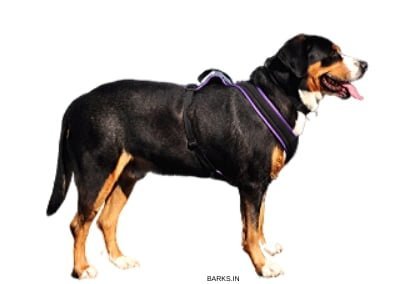
- Classification: Herding/Working breed
- Height: 48 – 54 cm
- Weight: 20 – 30 kg
- Coat: Dense short double coat
The Swiss Mountain dog is small-to-medium in size. This dog is agile and is capable of working long hours on farms. Tricolor, square-body, and Swiss cross-like marking on their chest are the most notable features of this dog.
Temperament
Like the other Sennenhund breeds, this dog is agile, alert, and loyal. They are a robust breed of dog with limitless energy. Hence, this dog must have space and sufficient exercise. They cherish farm life and enjoying herding livestock and guarding them.
With proper training and socialization, this dog makes an excellent companion. They are loyal to their master and family and tolerate kids and other pets.
Interesting Facts
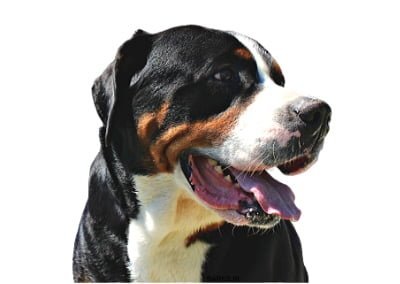
- Swiss Mountain Dog is one of the four Sennenhund-type dogs from Switzerland.
- This dog excels in herding and agility competitions.
- With the reintroduction of wolves in their native track, herders are now relying on dogs for protection.
Alpine Mastiff

The Alpine Mastiff is an ancient and extinct breed of dog that lived in Switzerland since 500 BC. St Bernard of Menthon, who built the St Bernard Hospice, used these dogs as guardians in the hospice.
This dog is the progenitor of the present-day St Bernard. Giant-sized and intelligent, the Alpine Mastiff was a formidable guard dog. Notable dog historian M.B. Wynn writes,
“A vast light brindle dog of the old Alpine mastiff breed, named L’Ami, was brought from the convent of Great St. Bernard, and exhibited in London and Liverpool as the largest dog in England.”
The Alpine Mastiff was a giant dog, a dog that stood 1m tall at the shoulders and weighed 160 kgs, making it one of the largest dog breeds in the world.
History and Origin
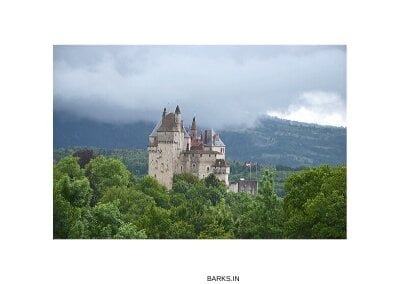
The Roman Molossers are the ancestors of the Alpine Mastiff. These dogs were famous for their large size, intimidating nature, and ferocity. These Molossers were the dogs of the Molossians, a Greek tribe. Experts believe two types of Molossian dogs existed. One, a hunting hound which was the ancestor of the Mastiff. Other, a livestock guardian.
Purpose
The Alpine Mastiff was a guardian, rescue-dog, and also a cattle dog. These dogs were enormous and had a formidable presence. Guardians of their flock and saving the lives of people from avalanches.
WB Wynn, in his book, the history of Mastiff, wrote this poem, which elegantly describes how the Alpine Mastiff served.
“Hark! Alpine Mastiff at the convent gate
Summons the brethren from their slumbering state.
Attended by pious monks they tread
The frozen paths, if but to find the dead;
So pass the lives of Bernard’s dogs ’till years
Beheld them buried ‘midst their master’s tears.”
Traits
- Classification: Guardian
- Weight: 120 – 160 kgs
- Height: 70 – 100 cm
- Coat: Double coat
The Alpine Mastiff was a giant-sized dog. These dogs had a broad head, wrinkled skin, and a square-shaped body. Paintings in the St Bernard Hospice show a brindle colored dog with
Interesting Facts
- The Alpine Mastiff is an extinct dog that lived in the St Bernard Hospice of Switzerland.
- This dog was enormous, weighing 160 kgs and stood nearly one meter tall at its shoulder.
- A dog named Barry helped rescue 40 people from avalanches.
Alpine Spaniel

The Alpine Spaniel is a large dog that lived in the St Bernard Hospice. The Alpine Spaniel is extinct; many experts attribute disease as the reason for their extinction.
Several experts argue that the Alpine Spaniel and Alpine Mastiff are the same dogs. Both lived in the St Bernard Hospice and worked as rescue dogs. However, the museum of Natural History at Bern has a record of two distinct breeds of dogs working in the same area.
Lack of clear descriptions makes it challenging to arrive at a consensus about these dogs.
History and Origin

The Alpine Spaniel was a search and rescue dog that rescued people buried by avalanches. These dogs relied on their sense of smell and hearing to accurately pinpoint people buried under several feet of snow. There also records of this dog used as livestock guardians.
Traits
- Classification: Spaniel type, working class
- Weight: 50 – 60 kg
- Height: 60 – 70 cm
- Coat: Double curly coat
The Alpine Spaniel was a large breed of dog. They had a remarkable sense of smell and sight. Several writers describe this dog as having thick curly hair. One writer says that these dogs were 2 feet at their shoulders and 6 feet long.
Interesting facts
- The Alpine Spaniel was a large breed of dog. Many experts believe the Alpine Spaniel and the Alpine Mastiff are the same.
- This dog is the progenitor of dogs such as St Bernard and Clumber Spaniel.
- This dog was large, 2 feet tall and 6 feet long.
Appenzeller Sennenhund

The Appenzeller Sennenhund is a medium-sized dog. Sennenhund is called Swiss mountain dog or Swiss cattle dog. Senn refers to a group of people who live in the Swiss Alps, herding their cattle. These people live in the Appenzell region of Switzerland.
There are four distinct Sennenhunds found in Switzerland. Appenzeller is the most famous among these dogs. Albert Heim, a renowned Swiss geologist, was fascinated by these dogs, and he started the first breed club in 1906.
History and Origin
The Appenzeller Sennenhund is a medium-sized dog. Sennenhund is called Swiss mountain dog or Swiss cattle dog. Senn refers to a group of people who live in the Swiss Alps, herding their cattle. These people live in the Appenzell region of Switzerland.
There are four distinct Sennenhunds found in Switzerland. Appenzeller is the most famous among these dogs. Albert Heim, a renowned Swiss geologist, was fascinated by these dogs, and he started the first breed club in 1906.
Purpose
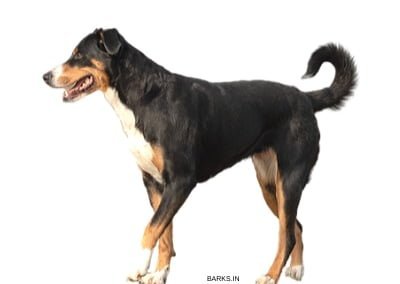
Appenzeller Sennenhunds are excellent cattle dogs. They are highly alert, agile, and have an everlasting supply of energy. Senn people rely on this dog not only to herd their cattle but also to protect their homestead.
This dog is courageous and will die, protecting its flock and its master. Appenzeller Sennenhund is an all-round farm dog and also make excellent companion animals.
Today, people compete with their dogs in agility competitions, obedience competitions, and Schutzhund. These dogs are very similar to the Australian Cattle dog, intelligent, and agile.
Traits
- Classification: Cattle and Herding dog
- Height: 47 – 58 cm
- Weight: 22 – 32 kg
- Coat: Double coat
This dog is an agile, Molosser-like with a heavy build. Curled tail and a distinctive tricolor coat is the hallmark of this breed. These dogs have a powerful jaw, the head is wedge-shaped, and ears are triangular.
Temperament
The Appenzeller Sennenhund is an intelligent, alert, and active dog. When trained and socialized, these dogs form a long-lasting bond with their family. These dogs also have an independent nature, so they need proper socialization to be compatible with other dogs.
Health
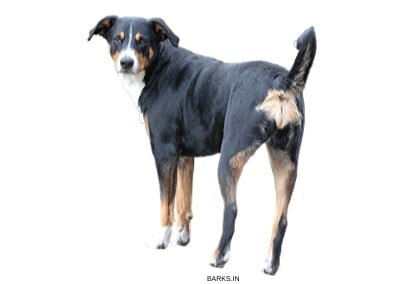
The Appenzeller Sennenhund is a very healthy breed. Careful selective breeding has ensured excellent health for this dog. The average life span for this dog is between 13 to 17 years. The following are some health issues that affect this breed.
- Hip Dysplasia: This is a painful condition that affects the dog’s hips. Make sure OFA certifies your puppy for “fair” hips. Never buy from “breeders of profit.”
- Patellar Luxation: This is another joint-related issue that affects this dog. The knee slips out of its socket, causing the dog to lose its balance.
Interesting facts
- Appenzeller Sennenhund is one of four Sennenhunds found in Switzerland.
- These dogs are descendants of ancient Roman cattle dogs.
- Appenzeller belongs to the Senn people of Switzerland.
Bernese Mountain Dog

The Bernese Mountain Dog is one of four Sennenhunds found in Switzerland. Berner Sennenhund is the German name for this dog. Sennenhund means alpine/pasture dog in German.
The Bernese Mountain Dog is an excellent cattle dog. They are intelligent, hardy, and capable of making independent decisions. This dog is the second most popular dog among all swizz dog breeds.
History and Origin
Experts believe this dog is a descendant of the ancient Roman Molosser-type dog. Roman brought their dogs 2000 years ago into Switzerland. This dog is a result of selectively breeding by the alpine herders and dairymen living in the canton of Bern.
This dog is locally called the Dürrbächler after the town Dürrbach. As early as 1907, dog fanciers established the first breed club for the preservation of this dog. Today the Bernese Mountain dog is a popular breed in several countries.
Purpose

Alpine herdsmen rely on this dog to perform multiple roles. They are a handy breed of dog around the farm, capable of guarding and herding. Some farmers use this dog to transport milk, cheese, and other dairy products and are locally called the cheese dog.
People also use this dog as a search and rescue dog. They have an excellent sense of smell and can locate people buried under snow by avalanches.
Traits
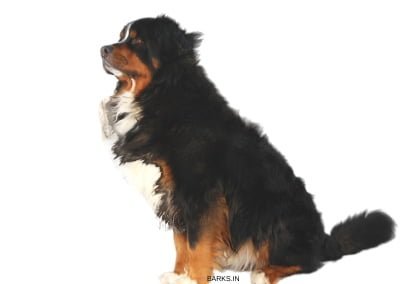
- Classification: Cattle and Herding dog
- Height: 64 – 70 cm
- Weight: 45 – 75 kg
- Coat: Double coat; Tricolor
Bernese Mountain Dog is a large dog, similar in size with the other Sennenhund. The distinctive feature about this dog is their deep chest and tricolored coat. From the side, this dog looks black; from the front, you will notice white markings on their face and chest, their head and feet have tan markings.
This dog is muscular, heavy-boned, and robustly built. They have a rectangular body and are longer than tall. Their tail is straight and carried low.
Temperament

The Bernese Mountain Dog has a balanced temperament. This dog is highly intelligent, extremely loyal, and super protective of its family. The breed standard defines this dog’s character as good-natured, self-assured, and laid back.
This dog is large and active, which requires space to run and play. They are a herding dog and tend to herd children, which can result in minor injuries to children. We recommend that you monitor your dog, especially when they are playing with kids.
Health
The Bernese Mountain Dog is a healthy breed of dog. Comparative studies on similar sized dogs show their life span to be less. The average life expectancy for this dog is 7 to 8 years. They are a short-lived breed.
- A study found that this dog is susceptible to canine cancer. Nearly 50% of these dogs in the US die of cancer.
- This dog is also prone to joint and bone-related issues such as hip dysplasia, arthritis, etc.
Interesting facts
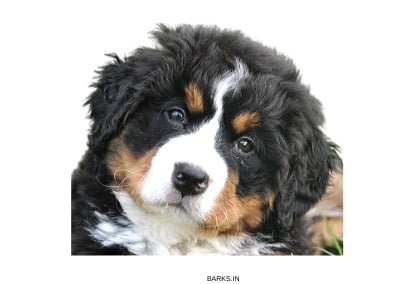
- Herdsmen and dairymen in Bern use this dog to carry milk and other dairy products, earning them their nickname, the Cheese dog.
- This breed of dog is gaining in popularity across the world. They are the 32nd most popular dog in the US.
- The Bernese dog is not only a cattle dog but also a rescue dog.
Bruno Jura Hound/St. Hubert Jura Hound
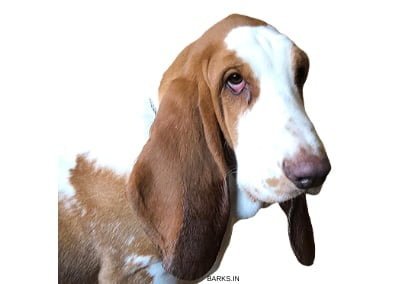
Bruno Jura Hound is an ancient breed of dog from the Jura Mountains. This dog is an excellent scent hound, renowned for its ability to track fox, hare, and small deer.
They are a small-to-medium-sized dog. Bruno Jura Hound is a descendant of the French scent hound, French Chien Saint Hubert, or the Bloodhound.
History and Origin
Bruno Jura Hound is a descendant of the French Bloodhound. This dog lives in the Swiss-French border, where people use this dog to hunt foxes and hare.
Experts believe this dog to be an ancient breed, living since the middle ages. They look similar to the Bloodhound with long ears and wrinkled skin.
Purpose
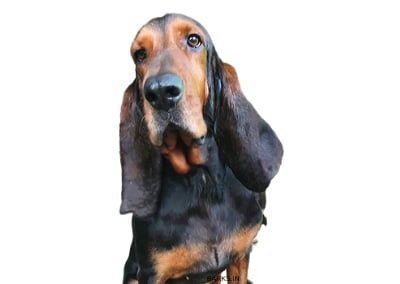
Bruno Jura Hound is a scent hound. They are descendants of the world-famous Bloodhound. With a remarkable sense of smell and natural tracking instincts, Bruno can track down its prey across a wide range of terrain.
Hunters rely on this dog for hunting foxes and hares. Bruno can work together with other dogs while pursuing prey.
Temperament
This dog has a balanced temperament. Bruno is a loyal and loving dog and makes an excellent companion dog. They are active and require open spaces to sniff and play.
Bruno Jura is excellent with kids and other pets. The only downside is that they get easily distracted. They like to be outdoors where they can put their noses to work.
Health

Bruno Jura is a healthy dog and has a life expectancy of 12 to 13 years. The following are some health issues.
- Bruno is susceptible to bloat. Bloat is a condition where the intestine of the dog twists and knots internally.
- They also suffer from gastrointestinal problems.
- Other issues include eye infection, skin problems, and ear ailments.
Interesting facts
- Bruno Jura Hound is a descendant of the Bloodhound. Like the Bloodhound, they are renowned for their sense of smell.
- This dog is an ancient breed of dog, living in the Jura mountains since the middle ages.
- Bruno Jura Hound is an excellent companion dog. They are loving and loyal to their family.
Continental Bulldog

The Continental Bulldog is a newer breed of dog created in Switzerland in early 2000. The Kennel Club of Germany and Switzerland officially recognizes Conti as a separate breed of dog since 2005.
Imelda Angehrn of Switzerland, whose love of the English Bulldogs saw her cross Olde English Bulldog with the English Bulldog. Continental Bulldog is a result of this outcrossing.
History and Origin
Conti is a modern dog breed. Imelda Angehrn of Switzerland crossed Olde English Bulldog with the English Bulldog to produce a dog that was healthier and had fewer health issues than the Bulldog.
The Swiss Kennel Club permitted outcrossing of Bulldogs and officially named the dog, Continental Bulldog. Currently, the German Kennel Club also recognizes this dog. However, the American Kennel Club does not recognize this dog.
Traits

- Classification: Non-sporting
- Height: 42 – 44 cm
- Weight: 20 – 30 kg
- Coat: Single smooth coat
Conti looks similar to the English Bulldog in appearance. This dog has a smooth-soft coat, square body with a muscular build, and a large head. The head of the Conti is not as big as the English Bulldog and is less wrinkled.
Temperament
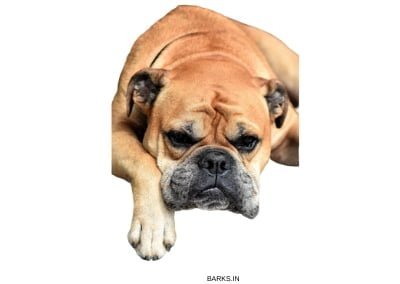
Conti is a balanced dog. They are neither too aggressive to too shy and make excellent companions. Like all Mastiff-type dogs, Conti’s need early socialization. Without proper socialization, they can be stubborn and sometimes aggressive.
Health
Contis are a healthy breed of dog. They have less respiratory issues when compared with their ancestors, the English Bulldog.
- Hip Dysplasia: This is a painful condition that affects the dog’s hips. Ensure OFA certifies your puppy for “fair” hips. Never buy from “breeders of profit.”
- Patellar Luxation: This is another joint-related issue that affects this dog. The knee slips out of its socket, causing the dog to lose its balance.
Interesting facts

- Conti is a new breed of dog that is a result of outcrossing English Bulldog with Olde English Bulldog.
- In early 2000, Imelda Angehrn of Switzerland wanted to breed a healthier Bulldog that is free from respiratory illness. She produced Contis through outcrossing English Bulldog.
- Conti is an excellent companion dog.
Entlebucher Mountain Dog (Entlebucher Sennenhund)

Entlebucher Mountain Dog is one of the four Sennenhund-type dogs from Switzerland. Out of the four, this dog is the smallest. Entlebucher Sennenhund is a cattle dog that has been living in the Swiss Alps for several thousand years.
Like all the cattle dogs, this dog is agile, alert, and limitless energy. These traits make them excel in cattle herding and agility competitions. Entlebucher gets its name from the Entlebuch region of Switzerland.
History and Origin
All the Sennenhunds are descendants of large Molosser-type dogs. Romans brought the ancestors of the Sennenhunds to Switzerland during the first century BC.
As a result of generations of selective breeding, four remarkable Sennenhunds are now present in Switzerland. These dogs excel in cattle herding and agility competitions.
Traits
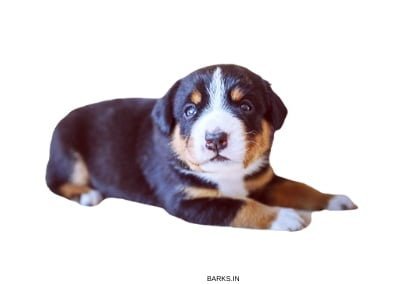
- Classification: Cattle and Herding dog
- Height: 48 – 50 cm
- Weight: 20 – 30 kg
- Coat: Double coat; Tricolor
Entlebucher Mountain Dog is a small-to-medium-sized dog. This dog is well proportioned. The head, neck, chest, and legs are in proportion to each other.
Entlebucher Mountain Dog male is slightly longer than they are tall. While the female is squarer. These are agile dogs, always ready to work and please. A few decades back, breeders had the practice of docking their tail. Today this practice is banned.
Temperament
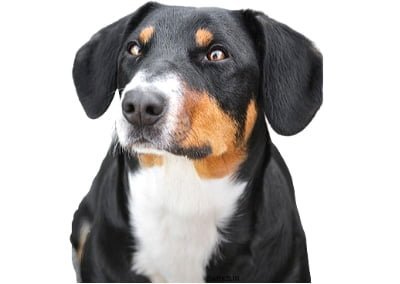
Entlebucher dog is similar to all other working dogs. These dogs need regular exercise to help them spend built up energy positively. Leaving them alone without physical activity can make these dogs restless. They can resort to chewing, barking, and aggression.
A properly trained Entlebucher dog is an excellent companion. They are loyal, intelligent, and are eager to play-fetch all day long. When this dog is with kids, we recommend close supervision as this dog tends to herd children.
Health

Entlebucher dog suffers from issues due to inbreeding. This dog today is rare, and their genetic pool is not diversified.
- Due to inbreeding, some puppies suffer from congenital disabilities.
- This dog also suffers from Hemolytic anemia. This condition makes short circuits the immune system and causes the body’s defense to attack the red blood cells.
- Progressive Retinal Atrophy (PRA) is an eye ailment when untreated can cause night blindness.
Interesting Facts
- Entlebucher Mountain Dog is the smallest of the four Sennenhunds-type dogs in Switzerland.
- This dog excels in cattle herding and agility competitions.
Greater Swiss Mountain Dog (Grosser Schweizer Sennenhund)

Greater Swiss Mountain dog is a native Swiss dog breed. This dog is one of the four Sennenhund-type dogs in Switzerland. Its the oldest and the largest of all the Sennenhunds.
Like its cousins, the other Sennenhunds, this dog is an excellent cattle dog. Grosser Schweizer Sennenhund is agile, fast, and has limitless energy. They are also an excellent family dog. A few decades ago, this dog was one of the most popular dogs in Switzerland.
History and Origin
Like the other Sennenhunds, the Greater Swiss Mountain Dog descended from dogs brought to Switzerland by Romans in the first century BC. Experts believe, in ancient times, breeders crossed local and indigenous Swiss dogs with the Roman Molosser-type dogs.
Traits

- Classification: Cattle and Herding dog
- Height: 65 – 72 cm
- Weight: 40 – 61 kg
- Coat: Double coat; Tricolor
Greater Swiss Mountain dog is a large breed of dogs and is a powerful, extremely agile, and heavy-boned dog. Breeders prefer agility, physical strength, and ability over appearance when choosing their breeding stock.
The Alpine Herders and dairymen use this dog to pull carts of cheese and milk. They also relied on this dog for guarding and herding their livestock. Hence, dogs had to be reliable and agile.
Temperament
This dog is friendly, good with family and kids, and loyal. Despite their large size, they are calm, dignified, and patient. The Greater Mountain Dog is renowned for forming close bonds with its family.
While on the field, this dog rarely strays away from its master and its herd. This dog cherishes close contact with people and friends and becomes miserable when left alone.
Health
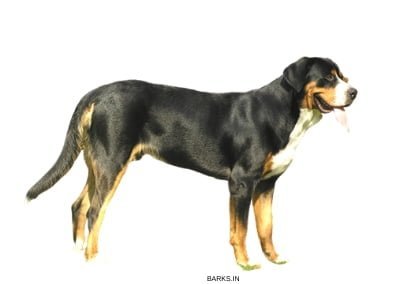
This dog is healthy when compared with dogs that are similar in size. The following are some ailments to affect this breed.
- Urinary incontinence is a condition when urine leaks when the dog is sleeping. Study shows that 20% of the spayed females suffer from UI.
- This dog also suffers from eye issues such as distichiasis and entropion.
- Epilepsy is a life-threatening condition that affects the nervous system. Epilepsy manifests as seizures.
Interesting facts
- Greater Swiss Mountain dog is the largest of all the Sennenhund-type dogs in Switzerland.
- Alpine herders and dairymen use this dog to pull carts of milk and cheese.
- This dog was the mascot for the media network, owned by Sun Microsystems CEO, Scott McNealy.
Schweizer Laufhund

Schweizer Laufhund is a Swiss dog breed that excels in hunting. This dog is a scent-hound capable of sniffing out hares and foxes from burrows. Schweizer Laufhund is medium-sized, has long ears, and with a long muzzle.
Schweizer Laufhund is one of the five hounds that are native to Switzerland. They are
- Bernese Hound
- Lucernese Hound
- Schwyz Hound
- Thurgovian Hound
- Bruno Jura Hound
Some experts argue that these are not distinct dog breeds. They say that these dogs are regional variants of the Bruno Jura Hound.
History and Origin
The Schweizer is an ancient breed of dog. Several experts believe that these dogs came to Switzerland through the Romans in the first century BC.
This dog and other scent-hounds from Switzerland possibly share a common ancestor, the Bloodhound. This dog closely resembles the Bloodhound.
Traits
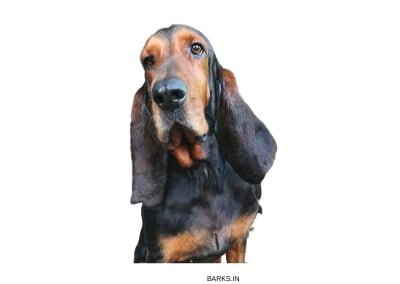
- Classification: Scent hound
- Height: 48 – 60 cm
- Weight: 20 – 30 kg
- Coat: Single smooth coat
The Schweizer Laufhund is a medium-sized dog with a muscular body. They are a scent hound with an exceptional nose. Experts believe that scent hounds have a sense of smell that is 1000 times more powerful than a human’s.
This dog resembles the Bloodhound, long floppy ears, long muzzle, deep bark, big round eyes, and a muscular body. Like most hounds, they have a single smooth coat. They occur in several colors mixed with white; in other words, they are piebald.
Health
Schweizer Laufhund is a rare breed of dog. There are no scientific studies conducted on the general health of this breed.
- This dog suffers from bone-related issues. Hip dysplasia and elbow dysplasia are painful conditions that require veterinary care.
- Hypothyroidism is a condition where the thyroid gland malfunctions causing metabolic disorders in this breed.
Interesting facts

- Adolf Hitler had a Schweizer Laufhund as his pet. He named his dog Schweizer Luftwaffe.
- This dog is one of the five scent hounds from Switzerland.
- They are an ancient dog. Experts believe the ancestor of this dog was a Roman dog.
Schweizerischer Niederlaufhund
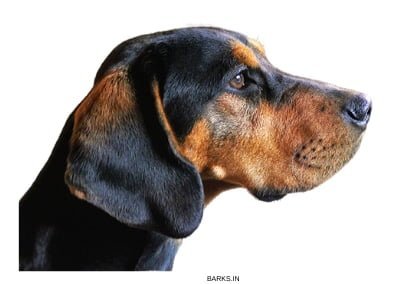
Schweizerischer Niederlaufhund is another scent hound that is native to Switzerland. Like the other Swiss scent hounds, this dog excels in hunting and following scent trails. Hunters use this dog and other scent hounds to track wounded animals.
Throughout history, these dogs have played several vital roles. They are excellent in hunts, can sniff out banned substances, rescue people buried by avalanches, and track down people.
History and Origin
The Schweizerischer Niederlaufhund is a descendant of Schweizer Laufhund. They are a modern breed of dogs developed in the 1900s. The Schweizer Laufhund was larger and faster. Hunters needed a smaller variant that can work in smaller areas.
Traits

- Classification: Scent hound
- Height: 35 – 43 cm
- Weight: 18 – 25 kg
- Coat: Single smooth coat
This dog is similar in appearance to the Schweizer Laufhund but proportionally smaller. They are a muscular and heavy-boned dog, with a powerful bite.
Temperament
Schweizerischer Niederlaufhund is a gentle dog. They are seldom aggressive, clam, and a purposeful dog. With an extraordinary nose, they love to sniff and follow scent trails.
This dog is good with kids, loving with all the family members, and will happily accept other pets.
Interesting facts
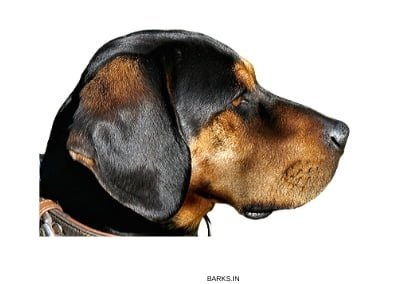
- Schweizerischer Niederlaufhund is a descendant of the Schweizer Laufhund.
- There are several varieties of this dog based on color. They are
- Berner Niederlaufhund
- Jura Niederlaufhund
- Luzerner Niederlaufhund
- Schwyzer Niederlaufhund
White Swiss Shepherd Dog

The White Swiss Shepherd Dog is a modern Swiss breed. They are pure white with no other color markings and are descendants of White German Shepherds from America.
The first White Swiss Shepherd came to Switzerland from the US in 1966. Since white markings on a German Shepherd are a fault, the German Kennel Club did not accept them. However, with White Shepherds gaining in popularity, several Kennel Clubs, including AKC, UKC, and FCI, recognize this dog officially.
This dog is an excellent guardian and shepherd. They are one of the most intelligent dogs in the world.
Interesting Facts
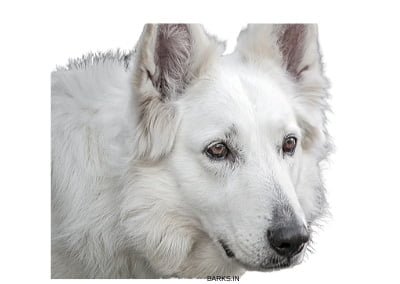
- White Swiss Shepherd is a descendant of White German Shepherd.
- This dog is gaining in popularity. Several Kennel Clubs such as the AKC, UKC, and FCI recognize this dog officially.
- Like their name, they are entirely white and look like the working German Shepherd (they don’t have a sloping topline like the show GSD).
Conclusion: Swiss dog breed list
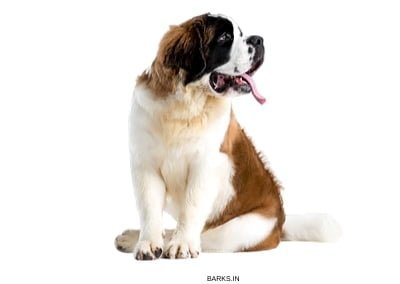
In conclusion, we humans are indebted to our dogs. Dogs keep us company when we are lonely, and we get unconditional love and unwavering loyalty. Native Swiss dogs are no exception to this fact.
These dogs deserve our respect, love, and, most importantly, protection. Several Swiss dog breeds are rare, and their gene pool has lost its purity. It is time now for us to rescue these beautiful dogs before they disappear forever.


Hi Lorraine,
Thanks for your feedback.